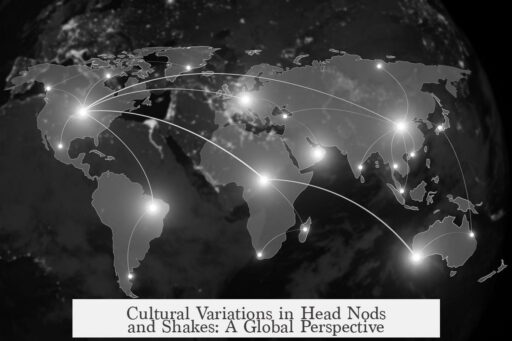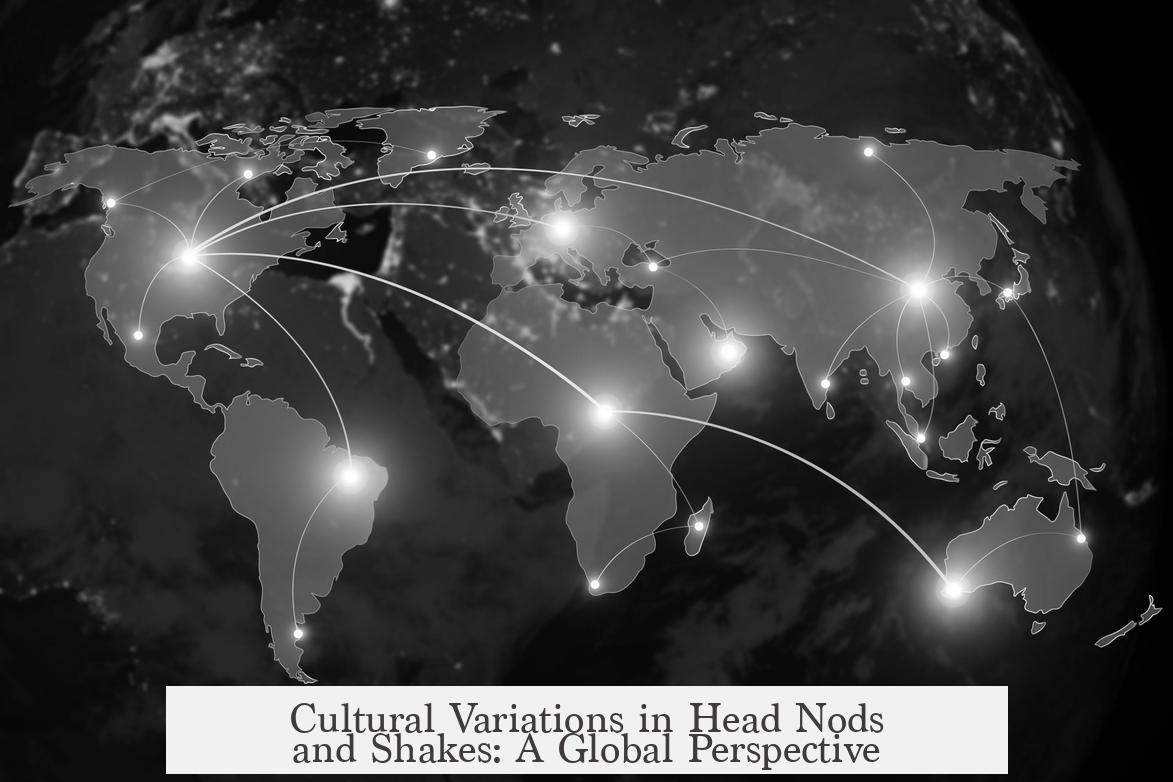Nodding has not always indicated ‘yes’ and shaking the head has not always meant ‘no’. In many cultures, these gestures represent the opposite meanings or carry different nuances. The common Western interpretation is not universal.

One notable example occurs in the Balkans, particularly Bulgaria, Macedonia, parts of Greece, and Albania. In these regions, nodding means ‘no’ and shaking the head side to side means ‘yes’. This reversal contrasts sharply with Western non-verbal communication norms.
The folklore behind Bulgaria’s reversed gestures links to a historic period under Ottoman occupation. According to a popular story mainly shared in northern Bulgaria, captured Orthodox Bulgarians refused to convert to Islam. They shook their heads violently while being threatened by Ottoman swords, indicating a firm ‘no’ to conversion. Over time, this act evolved culturally, with nodding signifying ‘no’ and shaking representing ‘yes’.

This narrative highlights how gestures embed themselves within historical and cultural identities. Despite being a folk legend without strong academic consensus, it presents an example of how collective memory can shape communication styles. However, the interpretation may not be uniform across all Balkan communities. The story is less prevalent or perhaps different in Albania, which lacks a similar national narrative of Ottoman resistance related specifically to head gestures.
Beyond the Balkans, similar inversions exist in South Asia. India and some South-East Asian countries exhibit gesture meanings that contradict Western norms. For example, nodding and shaking the head can have opposite or nuanced interpretations depending on local customs and age groups.

A historical reference within the Indian epic Mahabharata depicts head shaking as an affirmative gesture. In one scene, the warrior Arjuna shakes his head to accept Krishna’s words. Since the Mahabharata’s final edits were around the 8th century CE, this suggests that variations in head gestures have deep cultural roots that predate modern global communication.
From the standpoint of non-verbal communication science, gestures like nodding and head shaking do not have universal meanings. While head shaking might have some biological basis, as observed in primates and human infants turning their heads to refuse feeding, cultural patterns heavily influence their interpretation.

- Nodding often signals submission or lowering the head, which could be interpreted as ‘yes’ in many contexts, but not always.
- Head shaking might express aversion or refusal, rooted in early human behavior and even in some primates.
- Despite these tendencies, cultural conventions override biological signals, producing significant variation worldwide.
These gesture differences can cause confusion for travelers and cross-cultural communication. Encountering nodes and shakes that mean opposite things requires awareness and adaptation, emphasizing the importance of understanding local communication norms before interpreting gestures.
| Region | Nod Meaning | Head Shake Meaning | Notes |
|---|---|---|---|
| Western Countries | Yes | No | Standard global association |
| Balkans (Bulgaria, Macedonia, Greece, Albania) | No | Yes | Linked to cultural stories of Ottoman occupation |
| India and South-East Asia | Varies; sometimes inverted | Varies; sometimes inverted | Historical references confirm inversion |
In short, nodding and head shaking gestures have evolved independently in different cultures. The meanings are socially constructed rather than inherent or fixed. Being attentive to these distinctions aids effective communication across borders.

- Nodding does not always mean ‘yes’; shaking the head does not always mean ‘no’.
- Balkan countries like Bulgaria show reversed head gestures from Western norms.
- Cultural history, such as Ottoman occupation, can influence gesture meanings.
- Similar reversals appear in India and South-East Asia.
- Biology influences gestures, but culture shapes their meaning significantly.
Did nodding always indicate ‘yes’ and shaking your head always mean ‘no’?
No, nodding didn’t always mean ‘yes,’ nor did shaking your head always mean ‘no.’ In fact, these gestures have different meanings in various cultures, with some even reversing the usual Western interpretations. Surprised? You’re not alone. It turns out, the simple act of moving your head up and down or side to side can mean entirely opposite things depending on where you are. Let’s dive into the curious world of head gestures and unravel this global mystery.

First off, let me toss a friendly warning your way! If you ever find yourself in the Balkans, especially in countries like Bulgaria, Macedonia, parts of Greece, and Albania, prepare for some eyebrow-raising head moves. Here, nodding can actually mean “no,” and shaking your head means “yes.” It’s like the universe handed these countries a quirky gift to keep travelers on their toes.
The Balkans Twist: Nodding ‘No’ and Shaking ‘Yes’

The Bulgarian twist on head gestures has an intriguing folk tale attached to it. Imagine this scene during Ottoman times: a group of Orthodox Bulgarians face the terrifying demand to convert to Islam. With swords at their throats, these brave souls violently shake their heads “no,” even harming themselves in this defiant gesture. This act of refusal became so symbolic that the Bulgarians started using nodding to mean “no” and shaking to mean “yes.”
While charming, this story is more folklore than confirmed history. Yet, it illustrates how deeply non-verbal communication can root itself in culture, history, and even religious identity. The fact that this head-gesture reversal is mostly found in Northern Bulgaria and nearby regions points to how local stories shape our body language. Fascinatingly, this is not a universal belief even within the country, showcasing how gestures can vary even within a single culture.
What’s Going On With Nodding and Shaking Heads Worldwide?
Why do we even use these head movements the way we do? The answer lies partly in biology.
- Nodding generally signals submission or agreement—it’s like bowing without the full body gesture. When you nod, you lower your head, protecting your vulnerable neck. In a way, it’s a non-verbal “Yes, I agree.”
- Shaking your head seems nearly universal as a sign of rejection or denial—turning away from something you dislike or refuse. Interestingly, scientists observe similar gestures in monkeys and apes, such as bonnet macaques and baboons. Even children born blind or deaf seem to exhibit this naturally.
- One cheerful theory suggests babies learn to shake their heads by turning away from the nipple when they don’t want to feed, creating an early association between ‘no’ and head-shaking.
However, the idea that head shaking is a universal “no” gesture falls apart when you travel beyond Europe and the Americas.
The Curious Case of India and South-East Asia
Travel a bit eastward to India and parts of South-East Asia, and the rules flip in mind-boggling ways. Here, nodding and shaking your head can mean the opposite of what you’d expect.
For example, in some communities, a shake of the head might mean acceptance or “yes.” Anecdotal reports from travelers reveal that elderly folks in these regions might leave you scratching your head, literally, wondering if they agree or disagree.
History even supports this ambiguity. The ancient Indian epic, the Mahabharata, which was last edited around the 8th century, describes Arjuna shaking his head to show acceptance of Krishna’s advice—a clear “yes,” not “no.”
What Does This Mean For You?
So what should you do when traveling or interacting cross-culturally? Here are some practical tips:
- Observe, don’t assume. Just because you nod “yes” doesn’t mean it’s always so.
- Ask questions if unsure. Polite inquiries can prevent misunderstandings, especially in high-stakes or formal conversations.
- Learn local customs. Even a quick dive into local non-verbal communication can save you from blunders.
- Be patient with yourself and others. Non-verbal cues are deeply wired but also flexible with cultural context.
Why Do These Differences Exist?
Body language reflects history, evolution, social norms, and sometimes, dramatic events. In Bulgaria, a symbolic resistance against Ottoman rulers rewrote how gestures meant yes or no. In other places, like India, ancient texts and cultural practices shaped different standards. Biological tendencies mingle with local meanings, making the dance of communication both universal and wildly diverse.
For linguists and non-verbal communication specialists, these variations debunk the myth of universal gestures. There are very few, if any, universal movements. So, the next time you nod or shake your head, ask yourself: Who’s really listening, and what do they see?
Final Thoughts
In short, nodding hasn’t always meant “yes,” nor has shaking meant “no.” These gestures are culturally tinted lenses through which we view consent and rejection. The Balkans’ reversal, Indian inversions, and biological clues all remind us that communication is a rich tapestry, colored by history, culture, and biology.
So next time you nod or shake your head, remember: while you might be saying “yes,” someone across the globe might be hearing “no.” Language goes beyond words—sometimes, even beyond those simple gestures!




